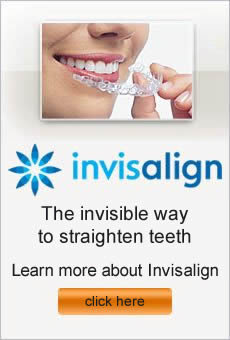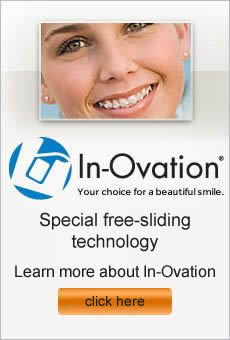Sports drinks are a popular way to rehydrate after exercising but may not be a healthy choice for your teeth. Around 62% of American teenagers consume at least one of these drinks each day, but excess consumption can take its toll on oral health. Listed below are some of the reasons why these drinks are harmful.
What Makes Sports Drinks so Bad for Teeth?
Many sports drinks are high in sugar and it’s best to avoid these brands. This advice is already well known, but what’s less obvious is the high acid content. Any dentist in Sherman Oaks will tell you it’s the acid that can present the most danger to your teeth. It’s been found that consuming these drinks for just five days could permanently damage your teeth.
But Aren’t They Healthier than Soda?
Many people choose sports drinks to enhance their athletic performance and think they are a better choice than ordinary soda. In fact there is not much difference between the two, as sports drinks can contain just as much, if not more sugar. It’s certainly a myth that sports drinks are better for your teeth than sodas.
What Type of Damage Can They Do to Teeth?
Sports drinks can cause enamel erosion which is where the hard outer layer of your teeth is literally eroded away by the acid in these drinks. This can cause your teeth to become sensitive to hot and cold and increases the risk of tooth decay.
How Can I Avoid This Risk?
It’s best to avoid these drinks completely, but if you can’t give them up then try to at least minimize your consumption. Afterwards rinse your mouth with water, but wait at least half an hour before brushing. This allows the acidity levels in your mouth to normalize which has the effect of enabling your tooth enamel to slightly re-harden. Once this has occurred it’s safe to brush. Your dentist in Sherman Oaks might also recommend chewing sugar-free gum after consuming one of these drinks. This is because chewing helps increase saliva production, reducing acidity in your mouth.
If you need a orthodontist in Sherman Oaks, contact us today
If you are beginning your orthodontic journey, it’s likely you’ll hear terms mentioned in the office that are new to you. If you or your child is told that some type of appliance is recommended to help achieve the perfect smile, it’s helpful to be familiar with what they are. Here are descriptions of some of the most common orthodontic appliances.
Elastics
Sometimes braces require gentle but continuous force to aid individual tooth movement or jaw realignment. This can be achieved using small elastics or rubberbands. They must be worn at all times, even when eating, to be fully effective.
Headgear
One approach to creating more space for teeth is wearing headgear, which attaches to the braces with metal hooks or a facebow. Straps usually anchor the appliance to the back of the neck or head. Headgear is often used to draw the molars further back in the mouth to allow more space for shifting the front teeth as desired.
Palatal expander
Widening the upper jaw to allow the upper and lower teeth to fit together better is possible with a palatal expander. For best results, it is used in patients under 15 who still have pliable jaw bones. The expander involves attaching a screw to the teeth with bands around the teeth, and then activating the expander by turning the screw with a key.
Bite plate
To correct a bite where the upper front teeth extend too far over the lower front teeth, a bite plate may be required to be worn for 24 hours a day for 3 to 6 months. This small acrylic appliance is clipped to the inside of the top teeth using metal clasps, and is typically used in the early stages of orthodontic treatment.
Holding arch
This appliance prevents the molars from moving and causing crowded teeth to spread. It basically offers a holding spot until permanent teeth come in.
Retainers
There are several styles of retainers in use, but the purpose of each of them is to maintain treatment results after braces have been removed. Retainers offer the best way to ensure long-term orthodontic results.
If you need a orthodontist in Sherman Oaks, contact us today
If your smile makes you unhappy because of problems like crooked teeth or a misaligned bite or large gaps, you may be anxious to correct your smile with braces. There are numerous options available for braces today such as traditional metal braces, ceramics, Invisalign and more. Once you and your orthodontist decide which treatment is best for you, it’s important to reserve time to repair any dental issues that might affect the success of your orthodontics before you get started.
Schedule an appointment with your dentist for a thorough checkup and professional cleaning prior to getting braces. If any of your teeth have decay that requires dental fillings, now is the time to have them done. You don’t want any extra teeth sensitivity due to decay, and having fillings completed may improve the fit and comfort of your braces. Also, it’s easier on both you and the dentist to perform the work without braces in your mouth.
Chips or cracks on your teeth should also be repaired at this time. You might need a dental crown or cap to best correct your problem. Have your dentist make the right corrections before you begin orthodontic treatment.
Wisdom teeth are a common culprit for problems with the spacing in your mouth. If you have wisdom teeth that have already erupted, it’s easy for your dental professional to tell if they should be extracted to achieve your ideal smile. If your wisdom teeth are impacted, it’s likely they should be removed prior to orthodontic treatment so that the process isn’t later ruined by your wisdom teeth coming in.
A professional teeth cleaning is an important step before getting braces. Brushing and flossing alone usually isn’t enough to eliminate all of the plaque buildup, tartar and bacteria that has accumulated on your teeth. Scaling and polishing is often necessary to make your teeth the best they can be prior to beginning orthodontic treatment. Even if you opt to go with Invisalign, your smile will look and feel better after a professional cleaning.
Once you have visited your dentist and had any necessary procedures completed, you can return to your orthodontist to begin your journey to a beautiful smile.
Schedule your appointment at our Sherman Oaks dental office
You may not realize it, but orthodontic treatment can drastically change people’s lives. A healthy, straight smile improves your appearance and increases self-esteem and confidence. Insecurities about your smile could be holding you back from all kinds of things; a beautiful smile might give you just the edge on life that you need.
It doesn’t matter if you’re 16 or 60, a great smile is important. Age is really not a consideration for orthodontic treatment, especially with new advancements making treatment more and more discreet. So if you’re unhappy with your look and wonder if orthodontics can help, schedule an appointment with a qualified and experienced orthodontist to learn about the possibilities for your smile.
Most orthodontists offer a variety of options for treatment. These may include traditional metal braces, ceramic braces, lingual braces, Invisalign clear aligners and other appliances as appropriate. Ask your orthodontist about the best way to improve your smile, making sure to voice your concerns about treatment and the lifestyle that you hope to have during the process. For example, if diet restrictions are a big deal to you, then Invisalign removeable aligners might be appealing.
Some common issues that orthodontics helps with include:
- Crowded or overlapping teeth
- Spaces or gaps between teeth
- Overbite where the upper front teeth protrude over the lower ones
- Underbite where the lower teeth cover the upper teeth
- Open bite where the teeth do not touch normally
A good orthodontist will work with you to create a comprehensive treatment plan that achieves your smile goals. You’ll learn how to care for your mouth during the process so that your teeth remain healthy and strong. Then when treatment is complete, you’ll be able to display your new look proudly and enjoy it for a lifetime.
We look forward to seeing you in our Sherman Oaks dental office
Oral cancer includes cancers of the tongue, the hard and soft palate, the sinuses, the throat, and the cheeks and lips. It is a disease that can be life threatening if not diagnosed early enough, and oral cancer rates are increasing. One of the main problems with this condition is that it is frequently diagnosed when the cancer is already well advanced, and when the chances of a complete cure are greatly reduced.
What Are The Symptoms of Oral Cancer?
The most common symptoms include:
- Sores in the mouth that fail to heal within two weeks, and which bleed easily
- Lumps, bumps and swellings in the mouth
- Rough patches of skin in the mouth
- Color changes to the soft tissues in the mouth, for example the development of red or white spots
- Difficultly in eating, chewing or swallowing
- Having a sore throat or feeling hoarse
- Noticing your teeth fit together slightly differently
- Certain areas of the face may become numb, or might feel painful or tender
How is Oral Cancer Diagnosed?
Oral cancer screenings are a part of regular dental checkups. Your dentist will examine all the soft tissues in your mouth, and will check to see if the lymph nodes in your neck are swollen. If they find anything that looks suspicious then they will remove a few cells for closer examination. This is done with a brush biopsy, where a small brush is used to collect a few cells, or through removing a small sample of tissue for closer analysis. If anything suspicious is found then your dentist will refer you to an oral cancer specialist for further tests.
Early diagnosis of this disease is essential, and you can help yourself by keeping an eye out for any possible symptoms in between regular screenings. One of the most commons symptoms is noticing an ulcer or sore that fails to heal within a reasonable timeframe. It is always worth seeking professional dental advice to help eliminate the possibility of oral cancer.
If you need a orthodontist in Sherman Oaks, contact us today



